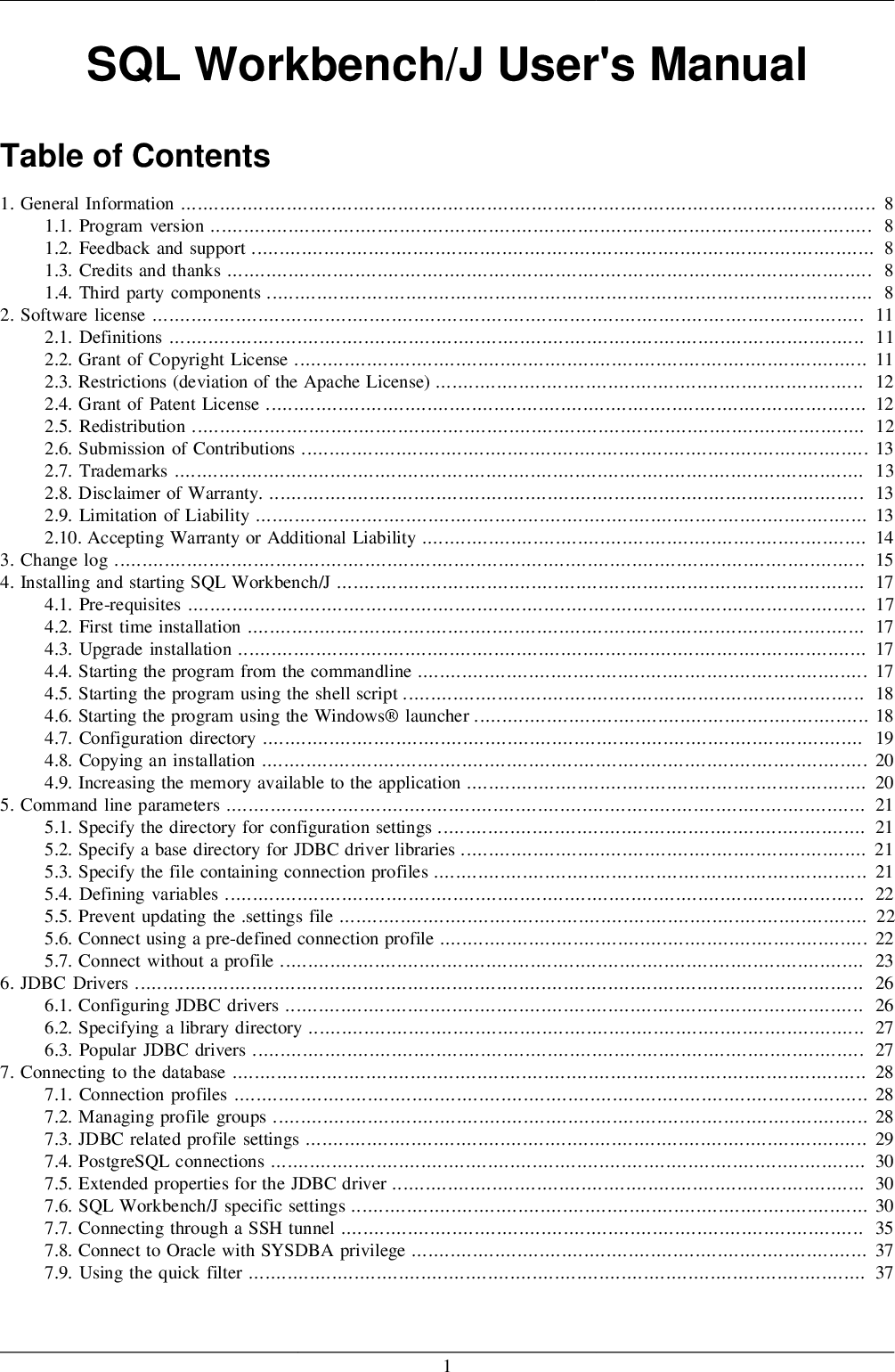By default the CLI will create a table in your database called SequelizeMeta containing an entry for each executed migration. To change this behavior, there are three options you can add to the configuration file. Using migrationStorage, you can choose the type of storage to be used for migrations. If you choose json, you can specify the path of the file using migrationStoragePath or the CLI will write to the file sequelize-meta.json. If you want to keep the information in the database, using sequelize, but want to use a different table, you can change the table name using migrationStorageTableName.
Also you can define a different schema for the SequelizeMeta table by providing the migrationStorageTableSchema property. Security logs contain information on HTTP requests and responses, how NGINX App Protect WAF processes them, and the final decision made based on the configured policy parameters. In this example, we are creating a skeleton policy, then enabling the file type violation.
However, we do not wish to specify the file types as these file types depend on an app that defines these types. We therefore wish to have this section populated from an external reference. Note that the filetypes section is replaced by the filetypeReference section. For a list of all the available reference options, consult the documentation . The default policy enables most of the violations and signature sets with Alarm turned ON, but not Block. These violations and signatures, when detected in a request, affect the violation rating.
By default, if the violation rating is calculated to be malicious (4-5) the request will be blocked by the VIOL_RATING_THREAT violation. This is true even if the other violations and signatures detected in that request had the Block flag turned OFF. By default, other requests which have a lower violation rating are not blocked, except for some specific violations described below.
For example, if you want to add blocking on a violation rating of 3 as well, enable blocking for the VIOL_RATING_NEED_EXAMINATION violation. Attack signatures are rules or patterns that identify attack sequences or classes of attacks on a web application and its components. You can apply attack signatures to both requests and responses.
The attack signature violation VIOL_ATTACK_SIGNATURE cannot be configured by the user. Rather, the violation is determined by the combination of the signature sets on the policy. There are several ways to configure the enforced signature sets. It is possible to customize the policy configuration using different enforcement modes of the above two violations, as well as configuring custom header elements. For example, we can add a new header Myheader and exclude this header from attack signature checks. Alternatively, we can specify a mandatory header that should be present in all requests being sent to our application.
By default, Sequelize automatically adds the fields createdAt and updatedAt to every model, using the data type DataTypes.DATE. Those fields are automatically managed as well - whenever you use Sequelize to create or update something, those fields will be set correctly. The createdAt field will contain the timestamp representing the moment of creation, and the updatedAt will contain the timestamp of the latest update. The second type of header enforcement is the ability to configure certain violations that are relevant only to specific header fields.
Examples of this are allowing repeated instances of the same header field and enabling/disabling Attack Signature checks for an HTTP header field. These violations are configured in the headers section where we configure each HTTP header element separately as an object in the list. Additionally, the corresponding violations need to be enabled in the blocking-settings section under the violations list for them to be enforced.
By default, the results of all finder methods are instances of the model class . This means that after the database returns the results, Sequelize automatically wraps everything in proper instance objects. In a few cases, when there are too many results, this wrapping can be inefficient. To disable this wrapping and receive a plain response instead, pass as an option to the finder method. The profile in this example enables checking of attack signatures and disallowed metacharacters in the string-typed fields within the service messages.
The profile also limits the size of the messages to 100KB and disallows fields that are not defined in the IDL files. GRPC is a remote API standard, and is an alternative to OpenAPI. In the following sections you will learn how to configure gRPC protection in the policy using gRPC Content Profiles. What we have been seeing so far has been related to making changes by actually overriding specific configuration values.
What would happen in the case we wanted to remove a specific configuration entity from the policy. For example, let's say we have added file types "aaa", "bbb", and "ccc", and now we wish to remove "bbb" from the list of disallowed file types. To resolve such situations, we have a modifications section where we can force modification where otherwise it is not possible using direct declarative configuration. The enforcement on the JSON payload is defined in the reg_form_prof JSON profile.
Note JSON content is always expected for this URL - it applies to all header name and value combinations, and no other content option exists for this URL. Also note that we limited the method to POST in this URL. A POST request to this URL with a body that is not well-formed JSON will trigger the VIOL_JSON_MALFORMED violation. It also creates name spaces that avoid name conflicts among user-defined signatures. Signatures are uniquely identified by the combination of tag and name. The tag_name should be replaced with the tag name to be assigned to all signatures in this file or group.
The revisionDatetime specifies the date or version of the signature file. Many of these functions and operators will convert Unicode escapes in JSON strings to the appropriate single character. This is a non-issue if the input is type jsonb, because the conversion was already done; but for json input, this may result in throwing an error, as noted in Section 8.14. Above we have the models User and Task, both using the underscored option. Also, recall that since timestamps is true by default, we should expect the createdAt and updatedAt fields to be automatically created as well.
The first type of header enforcement is global enforcement for all header content, regardless of the header field name or value. This type of enforcement enables/disables violations that are effective for all contents of the header section of the request. Examples of this are VIOL_HEADER_LENGTH and VIOL_HEADER_METACHAR. These violations can be configured in the blocking-settings section under the violations list in the declarative policy. Adding and enabling additional security features to the policy can be done by specifying the violation name and the alarm block state to "true".
To set different states to sub-violations within the violation, enable the violation first, then specifying and enable the sub-violations. Also, a violation may have its own section that provides additional configuration granularity for a specific violation/sub-violation. The examples below show how to enable a violation and sub-violation in a declarative format. The policy JSON file specifies the settings that are different from the base template, such as enabling more signatures, disabling some violations, adding server technologies, etc.
The NGINX App Protect WAF security policy configuration uses the declarative format based on a pre-defined base template. The policy is represented in a JSON file which you can edit to add, modify and remove security capabilities with respect to the base template. The way the policy is integrated into the NGINX configuration is via referencing the JSON file in the nginx.conf file. App Protect includes predefined attack signatures to protect your application against all attack types identified by the system. As new attack signatures are identified, they will become available for download so that your system will always have the most up-to-date protection. Instead of providing full Unicode case support by default, SQLite provides the ability to link against external Unicode comparison and conversion routines.
The SQLite source code includes an "ICU" extension that does these overloads. Or, developers can write their own overloads based on their own Unicode-aware comparison routines already contained within their project. My collection shows a collection of all non-fungible tokens you've created using our platform, Algoland. In install-wallet.blade.php, we check if AlgoSigner extension is available and installed in the browser. If it's installed we use the connect() method which will show a dialog in order to give permissions for our dApp.
Once permission has been giving, we fetch the first address in our accounts array and send an HTTP Post request to the signin endpoint of our server. This information is then stored in the Session for our user. Note that we provide a provider variable which is used to determine on how we signed in . Extracted key values can then be referenced in other parts of the query, like WHERE clauses and target lists.
Extracting multiple values in this way can improve performance over extracting them separately with per-key operators. Some operations likeModel.findAndCountAll()execute multiple queries asynchronously (e.g.Model.count() andModel.findAll()). Using a maximum of one connection forces the queries to be exectued serially . This is because the serialized query will be stuck waiting on the pool until the connection used by the other query is released. This method now only takes 2 parameters, tableName and options. Previously the second parameter could be a list of column names to apply the constraint to, this list must now be passed as options.fields property.
By default the CLI will not save any seed that is executed. If you choose to change this behavior (!), you can use seederStorage in the configuration file to change the storage type. If you choose json, you can specify the path of the file using seederStoragePath or the CLI will write to the file sequelize-data.json.
If you want to keep the information in the database, using sequelize, you can specify the table name using seederStorageTableName, or it will default to SequelizeData. Adding constraints between tables means that tables must be created in the database in a certain order, when using sequelize.sync. If Task has a reference to User, the User table must be created before the Task table can be created. This can sometimes lead to circular references, where Sequelize cannot find an order in which to sync.
A document can have multiple versions, and for convenience, a document has a reference to its current version. Note that we didn't define any attributes on the User_Profile model. This cannot be represented by adding one foreign key to one of the tables, like the other relationships did. This will be an extra model which will have two foreign key columns and will keep track of the associations. The junction table is also sometimes called join table or through table.
To start using MongoDB's full-text search capabilities, you must create a text index on a collection. Indexes are special data structures that store only a small subset of data from each document in a collection separately from the documents themselves. There are several types of indexes users can create in MongoDB, all of which help the database optimize search performance when querying the collection.
The select() method specifies the SELECT fragment of a SQL statement. You can specify columns to be selected in either an array or a string, like the following. The column names being selected will be automatically quoted when the SQL statement is being generated from a query object. It is worthy to note that if a newly added signature set name matches an existing signature set name, it will not overwrite the existing set.
Instead, a new set will be created with "_2" appended to the signature set name. The older list "My_custom_signatures" with 3 signatures will remain intact. This would include low, medium, and high accuracy attack signatures. After we got the transaction fields, we pass them to myAlgoWallet.signTransaction(transaction.fields); which will popup a dialog asking to sign the transaction.
Once the transaction has been approved, we send the signed transaction back to our server. Note that the signTransaction returns the signed transaction as a Uint8Array, so we base64 encode it before sending to the server. Figure 12 displays the dialog that is shown requesting the user to sign the transaction.
This will return the CID without storing the file on the server. Once we have our CID, we will have to create our metadata, add the data from the front-end and build the transaction. Pay attention how the metadata is encoded in the note field. You can store your model definitions in a single file using the sequelize.import method. The returned object is exactly the same as defined in the imported file's function. The import is cached, just like require, so you won't run into trouble if importing a file more than once.
If the AWS Lambda function times out (i.e. the configured AWS Lambda timeout is exceeded), the Node.js event loop will be "paused" regardless of its state. This can cause race conditions that result in connection errors. Now edit this file and set correct database credentials and dialect.
The keys of the objects (e.g. "development") are used on model/index.js for matching process.env.NODE_ENV (When undefined, "development" is a default value). A Migration in Sequelize is javascript file which exports two functions, up and down, that dictate how to perform the migration and undo it. You define those functions manually, but you don't call them manually; they will be called automatically by the CLI. In these functions, you should simply perform whatever queries you need, with the help of sequelize.query and whichever other methods Sequelize provides to you. Here, instance calls mean method calls that are called from an instance .
Mixins are the main example of instance methods (instance.getSomething, instance.setSomething, instance.addSomething and instance.createSomething). Notice that the outer object is an User, which has a field called profiles, which is a Profile array, such that each Profile comes with an extra field called grant which is a Grant instance. This is the default structure created by Sequelize when eager loading from a Many-to-Many relationship. The A.belongsToMany association means that a Many-To-Many relationship exists between A and B, using table C as junction table, which will have the foreign keys . Sequelize will automatically create this model C and define the appropriate foreign keys on it.





















































